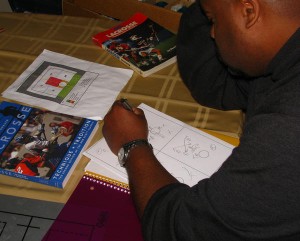 A leader should be slow to punish and swift to reward.
A leader should be slow to punish and swift to reward.
Ovid.
This quote strikes a chord with me, because as I look forward to my eldest daughter’s Jr. High years and her becoming a pre-teen, I struggle with how to punish and reward her. Fortunately for me a stern word and a harsh look has typically been all the punishment she has ever needed. However she no longer responds to “Will you do that for a Popsicle?” I honestly have never been one for corporal punishment, not that my kids didn’t ever deserve it, but because I am considerable larger than them, and was a little scared I could hurt them. Lucky for me, my tone of voice has always instilled a little fear in them and it has worked…..until recently.
It seems as though my daughters have realized I am all talk, and that they have me wrapped around their fingers. So as I struggle with how to reward and punish them, I thought I would try to get ideas from others on lessons learned from rewards and punishments.
Click here to read the rest of the article »










